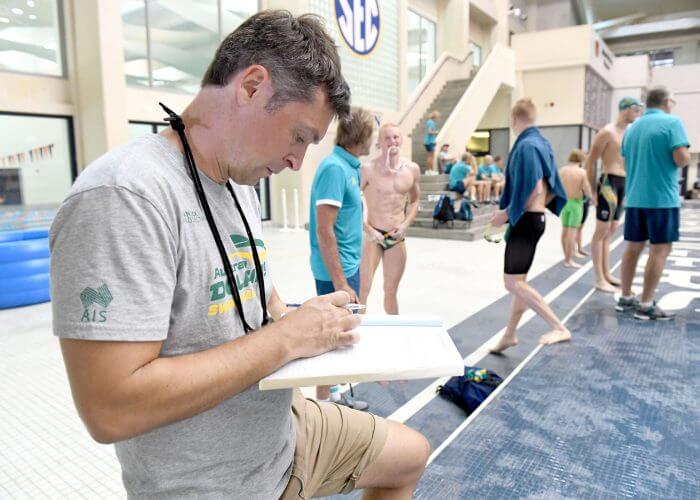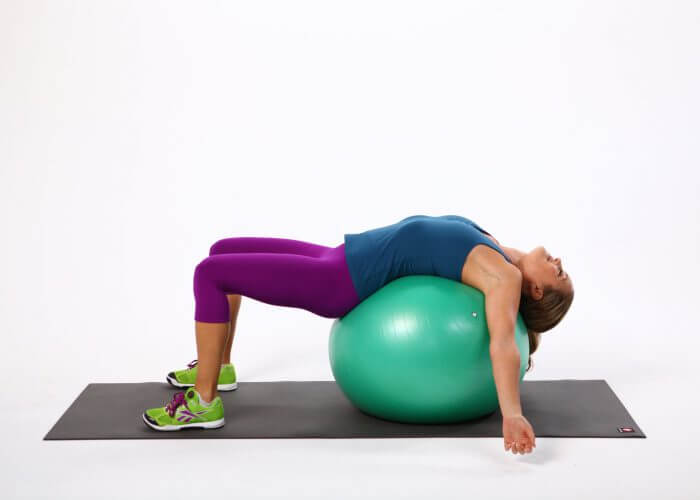Q&A with Physical Therapist, Dr. Angela Tate on Swimmer’s Shoulders

By Taylor Byers, Swimming World College Intern.
Shoulders are the most commonly injured area of the body in competitive swimmers. The constant overhead motion that swimmers do every day puts a lot of stress on the shoulders. Angela Tate, PT, PhD, Cert. MDT is a physical therapist at Apex Physical Therapy in Blue Bell, Pa. specializing in treatment of shoulder pain for competitive swimmers. Dr. Tate is a faculty member of the Physical Therapy Department at Arcadia University in Glenside, Pa. where some of the doctoral students have had the opportunity to work with her on research projects and assist with publishing their findings and presenting their research at state and national conferences.
In addition to physical therapy, Tate is a Masters swimmer and says, “I love swimming and its one of the few sports you can do your whole life, so I wanted to do research to help swimmers protect their shoulders so they can continue to swim!” Swimming World had a chance to catch up with Dr. Tate to learn more about her extensive research on swimmer’s shoulders.

Photo Courtesy: Dr. G John Mullen
Swimming World: Walk us through some of the studies you have done on swimmer’s shoulders and their results.
Tate: One study we did was investigating both in the water and dry land training methods of swimmers across the country. We found that the average yardage of both high school and college swimmers may put them at higher risk for shoulder tendon degeneration known as tendinopathy. An Australian study reported that the swimmers in their study who trained more than 35,000 meters per week were four times more likely to have tendinopathy than those training less yardage. We also found that the dry land training performed by many swimmers does not address the typical weaknesses or mobility restrictions of swimmers, and some may actually put swimmers at increased risk of shoulder pain.
In another study, we investigated the education and practices regarding overuse injury in youth swimming. Of the 96 Eastern Zone USA coaches that participated, 44 percent reported ASCA (American Swim Coaches Association) Level 1 as the highest formal training attained. Levels 2 and 3 are the Stroke School and the Physiology School, and most had not taken these levels of training. The coaches cited barriers to coaching education including course time and cost, so I feel that we should try to make more opportunities for our coaches to be educated.
We have found that coaches are reporting additional training would be helpful in reducing pain in their swimmers. For example, we studied 236 female swimmers from 18 teams and found that swimmers who did cross training like soccer or running and those who had stronger core muscles and longer pectoral muscles had less shoulder pain and difficulty swimming. By educating coaches on findings like these, we may be able to guide dry land training practices and reduce shoulder pain.
SW: How should coaches know how much yardage they should be writing for their practices?

Photo Courtesy: Delly Carr / Swimming Australia Ltd.
Tate: As you may know, there are pitch count guidelines in baseball and softball to help youth coaches determine how much throwing is safe, but there are no yardage guidelines available to assist swimming coaches in determining how much is safe for specific age groups. I think that given the high incidence of shoulder pain in swimmers and the fact that coaches feel they would benefit from additional education on shoulder injury prevention, USA Swimming or other sources should consider funding studies to provide safe yardage guidelines and recommendations to coaches for both in-water and dry land training.
Research studies have reported a 40 to 91 percent prevalence of shoulder pain in swimmers from different age groups. I am optimistic that we can reduce the incidence of shoulder pain through prevention methods, but we need funding to perform studies to determine optimal yardage and exercise to enhance performance and prevent injury.
SW: Do you have any examples of shoulder exercises that swimmers should be doing to prevent shoulder injuries?
Tate: Swimmers have tight front (pectoral) muscles and weakness in their back muscles. As a result, we tend to exhibit a slouched posture as a result of training mostly freestyle, which works the front muscles. Strengthening the back muscles and stretching the front muscles is recommended. I really like the idea of lying on a physio ball on your back with arms outstretched for two minutes after practice, which extends the spine and stretches the front muscles.

Photo Courtesy: POPSUGAR Photography
SW: Are there any dry land or lifting techniques that should be avoided to prevent shoulder injury?
Tate: Yes. I usually recommend avoiding overhead lifting of weights or medicine balls, as swimmers elevate their arms overhead thousands of times per practice, which can cause overuse injuries in their tendons. I also recommend avoiding push-ups and bench presses, as placing the elbows behind the shoulders with a load can produce shoulder injuries.
SW: You have mentioned that overhead activities like kicking with a kick board and kicking in streamline might not be best, especially for those with shoulder pain. Do you suggest another technique instead?
Tate: Because the prolonged overhead positioning with kick boards has been shown to increase pain in symptomatic swimmers and perhaps contribute to compression of the shoulder tissues, I recommend use of kicking drills like 6-3-6, in which swimmers perform a specified number of kicks on one side followed by a few strokes then a specified number of kicks on the other side. In this method, overhead positioning isn’t sustained, and one side at a time is overhead.
SW: What do you suggest for swimmers to be doing at each age category to help prevent shoulder injury?

Photo Courtesy: Taylor Brien
Tate: I think it would be helpful to encourage swimmers to participate in other sports using their legs and core, like running or soccer. I think it is important to not specialize in one sport so early in their childhood, as swimming repetitively can result in overuse injuries to the tendons and cartilage in the shoulder. Sometimes, youth swimmers will go through a rapid growth phase and their bones grow more quickly than their muscles. This can result in pain and inefficiency in their stroke. If this happens, swimmers should be evaluated by a physical therapist who can measure strength, muscle length and flexibility in order to prescribe specific exercises for the developing swimmer.
Also, as I said before, I think that establishing guidelines for safe training yardage and for rates of yardage progression across the season would really help coaches with writing practices based on how much a swimmer’s body can handle given their developmental level. By having more studies done on swimmer’s shoulders, guidelines could be established in hopes of reducing the number of shoulder injuries in swimmers nationwide.
All commentaries are the opinion of the author and do not necessarily reflect the views of Swimming World Magazine nor its staff.




Dominic Redpath
Matt Daugherty
Too much butterfly too many miles not enough back weightlifting to pull shoulders back. And on and on. Cross-train. How about. when you go to dr and the day oh. Breast/stokers knees.
Great information. I have talked to few high school coaches and it seems as though they think since their athletes are in the water that this reduces injuries. I still don’t think there is enough information about over use injuries. Limiting mileage/yardage makes sense.
Rory O’Dell
Katie Doyle
Please
Kenzie
What about incorrect technique . Working against the natural movement of the shoulders. Seen it time and time again.
Monte McNew Colin Mcnew
Geneva Jason
Jacob Evans